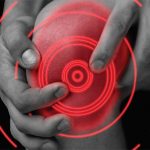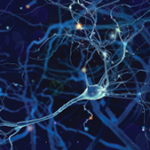Some of this work has involved a collaboration with the Southwest Transplant Alliance, one of the nation’s biggest organ procurement organizations, for the recovery of dorsal root ganglia in good condition for study in the lab following the removal of organs from organ donors. The team also works with neurosurgeons of cancer patients having thoracic vertebrectomies to recover their DRGs.
Researchers are also doing RNA sequencing to better understand what is changing within neuropathic DRGs that might be driving changes in nociceptor physiology, Dr. Price said. The team is trying to delve deeper into the roles of the cytokines Oncostatin M and leukemia inhibitory factor in potentially driving excitability of nociceptors in the DRG and the signaling of MAP (mitogen-activated protein) kinases. They have also turned to CRISPR editing to design naked plasmids that are taken up by human DRG neurons.
“We think this is a good testing paradigm to better understand what these immune-derived factors in arthritic joints are doing to the nociceptors that enervate those joints,” Dr. Price said. The target is a better understanding of the different subsets of human nociceptors in the DRG in the petri dish.
Neuro-Immune Interactions

Dr. Ru-Rong Ji
Ru-Rong Ji, PhD, professor of anesthesiology and director of the Center for Translational Pain Medicine at Duke University School of Medicine, also discussed the connections between neuroinflammation and immune therapy in pain. He emphasized the distinctions between inflammation—injury to peripheral tissue and systemic response; neuroinflammation within the peripheral and central nervous systems; and neurogenic inflammation, caused by activation of nociceptors and release of neuropeptides.
Neuroinflammation, with its infiltration of immune cells and activation of glial cells, causes both neurologic and psychiatric disorders and is a driving force in chronic pain, Dr. Ji said. Inflammatory mediators can be pro-nociceptive (i.e., pro-inflammatory) and anti-nociceptive (anti-inflammatory), with chronic pain defined as a loss of homeostasis and pro-resolution defined as a return to homeostasis. Acute inflammation can also resolve pain in some cases by producing anti-inflammatory and pro-resolving mediators. Typically, analgesics for joint pain are either neuro-modulators or immune modulators.
Dr. Ji’s lab is interested in neuro-immune interactions and has explored applications such as the injection of human serum from Lupus patients intrathecally into mice to induce persistent pain. His lab also showed that conditioned serum from healthy volunteers can resolve chemotherapy-induced neuropathic pain. He highlighted specialized pro-resolution mediators (SPMs) derived from fish oil, an anti-inflammatory dietary supplement, with potentially more potent analgesic effects than morphine and NSAIDs.


